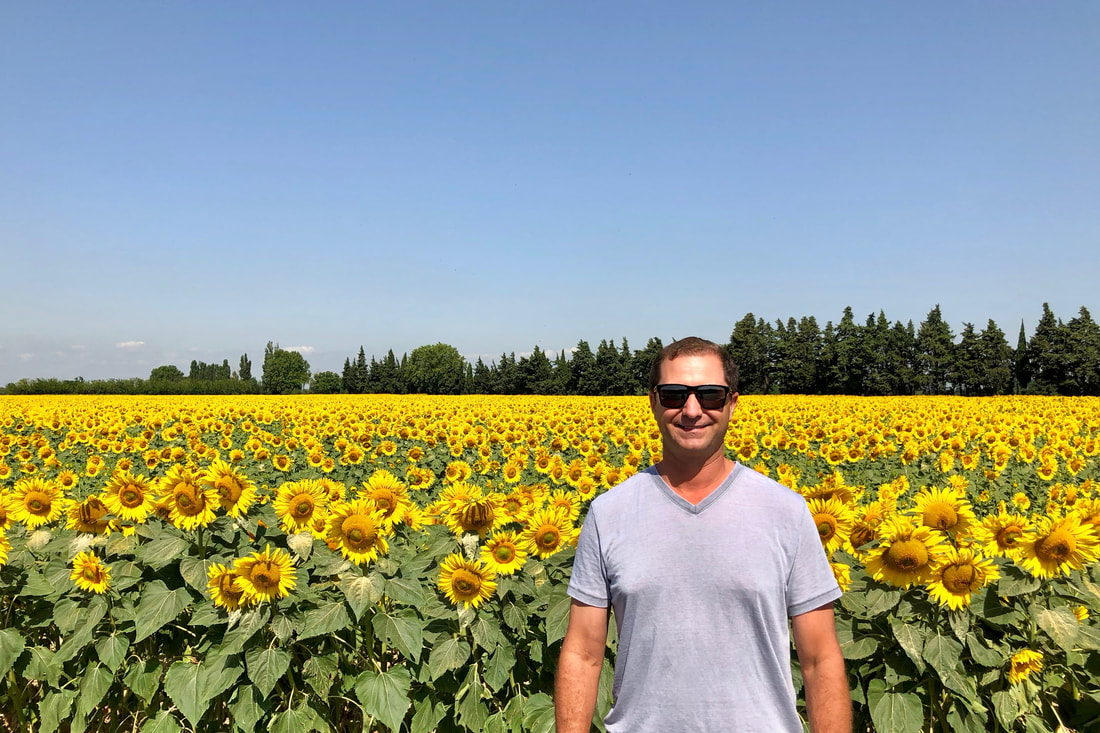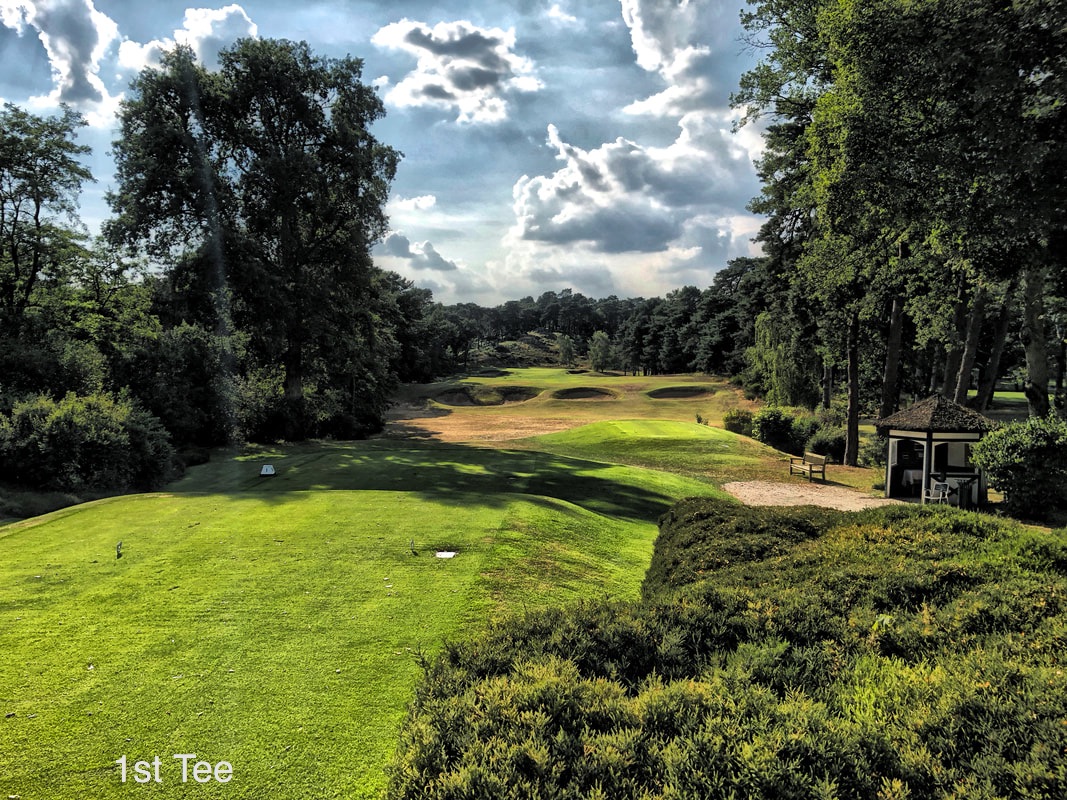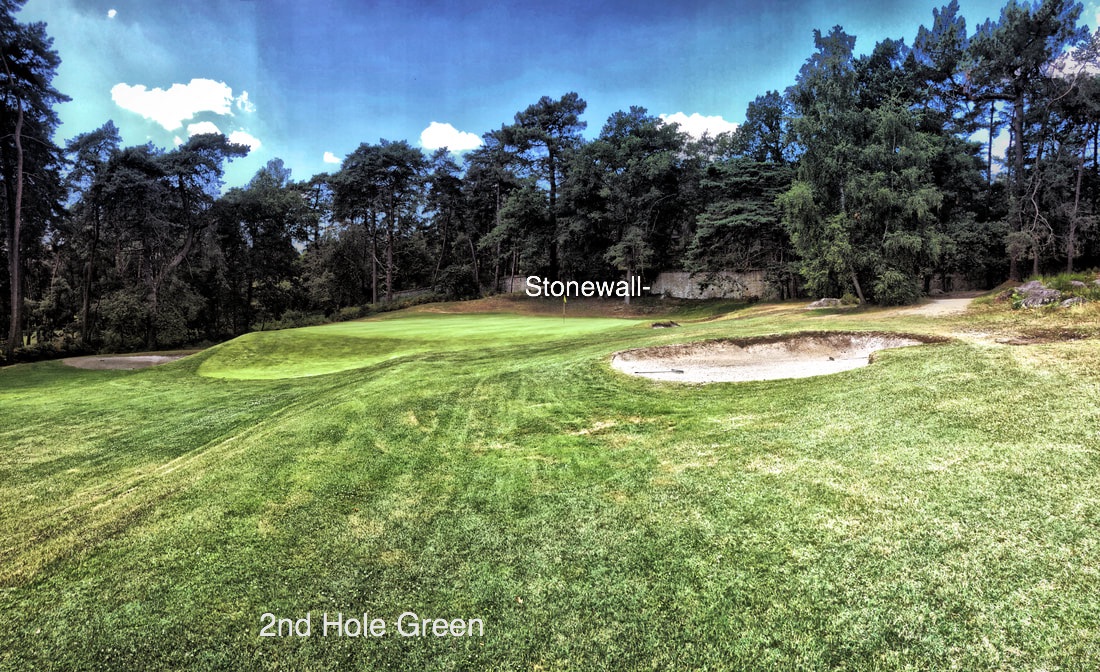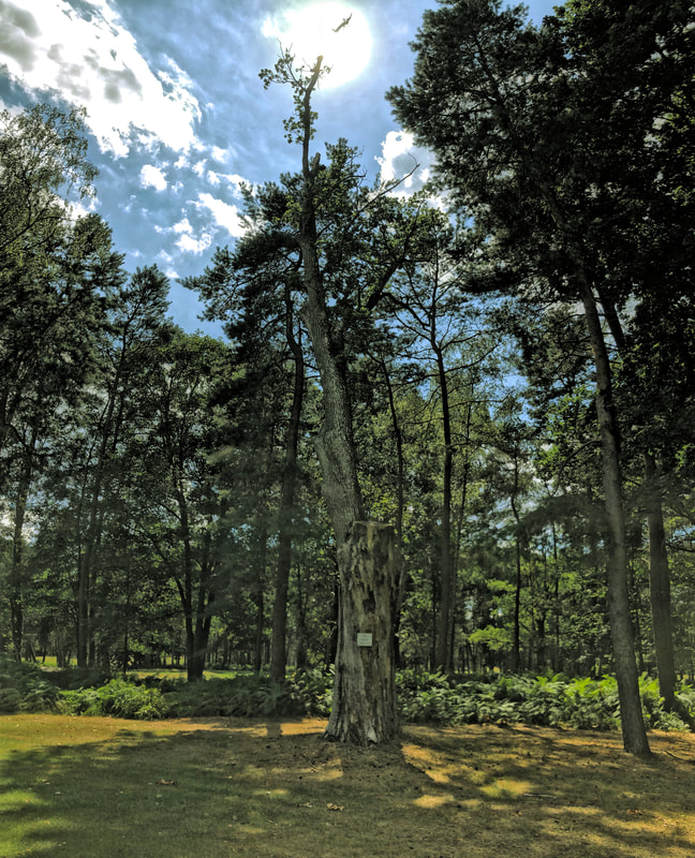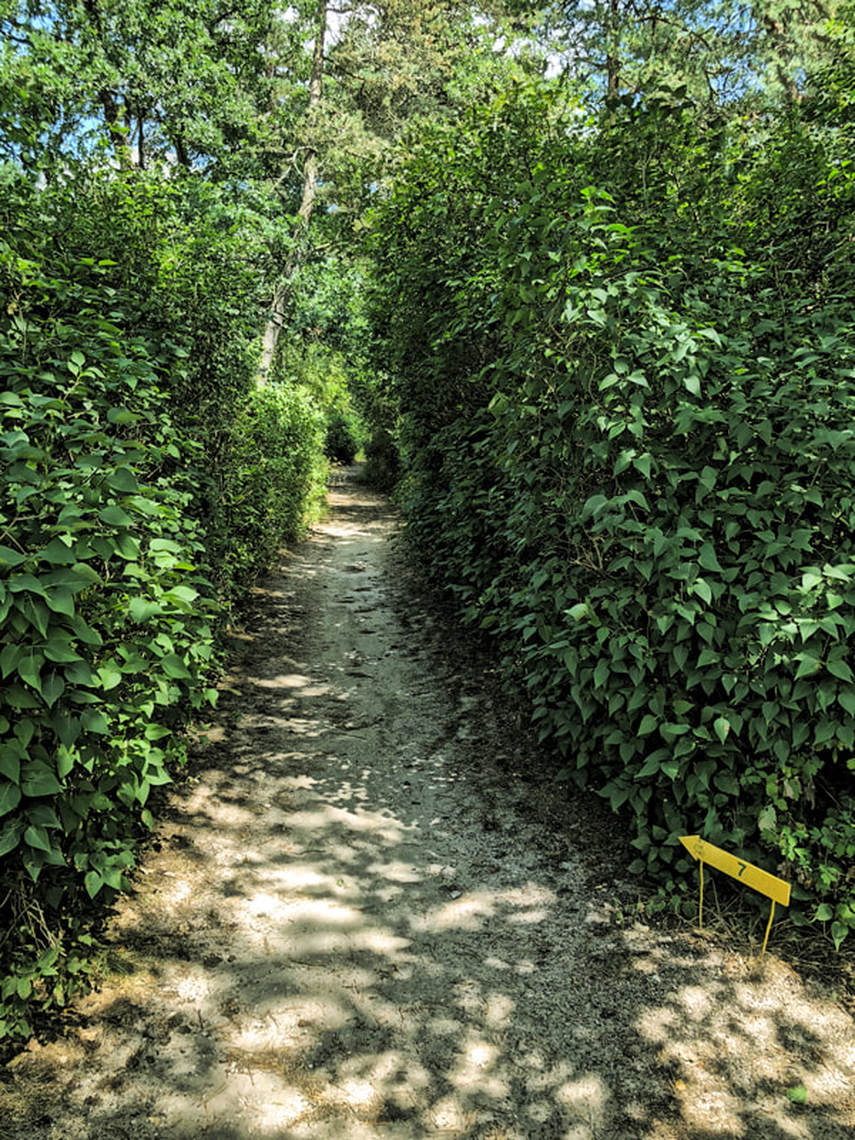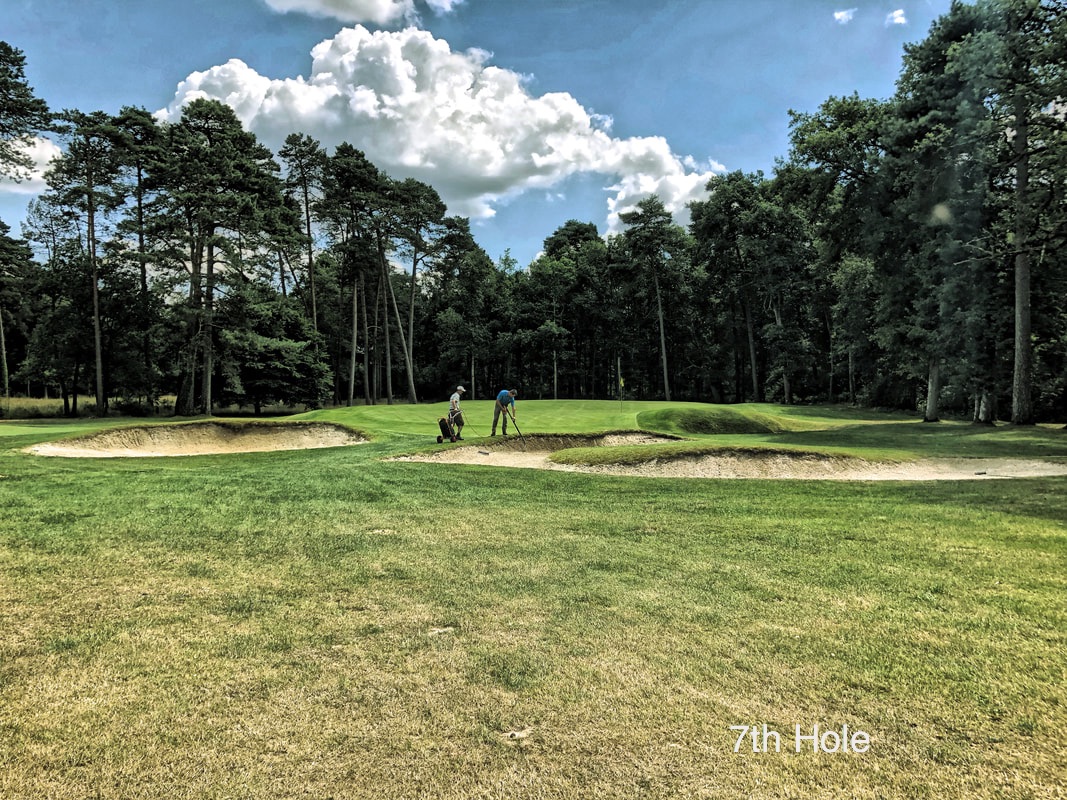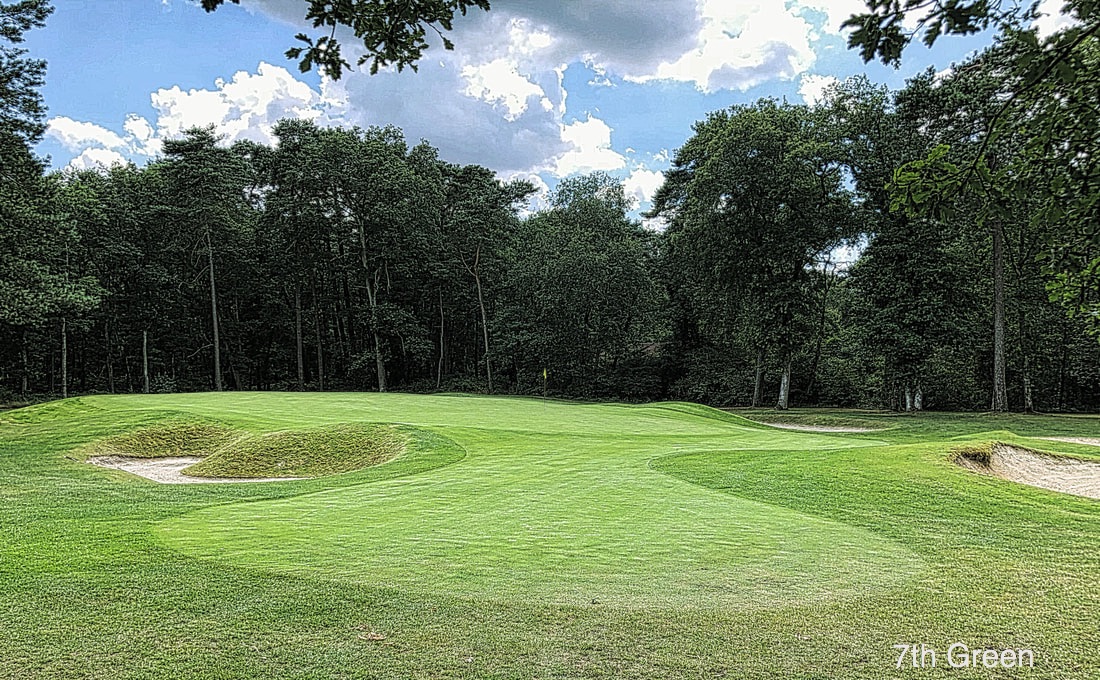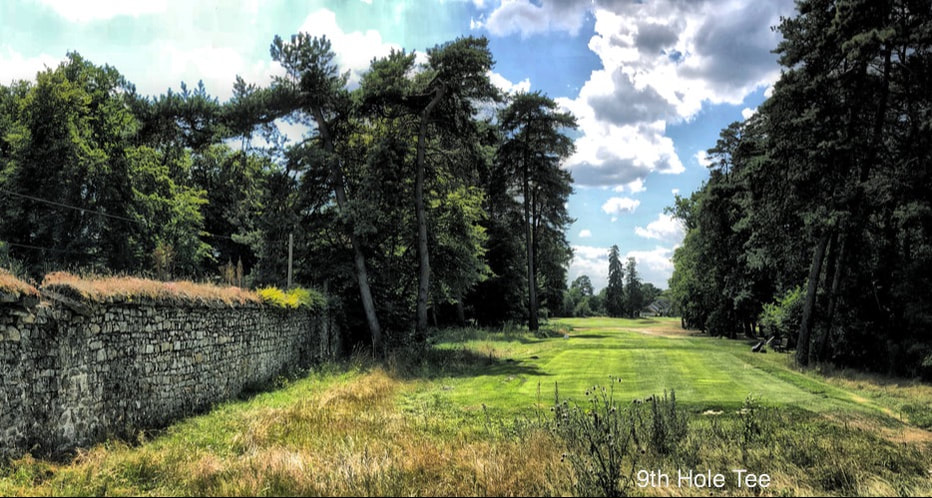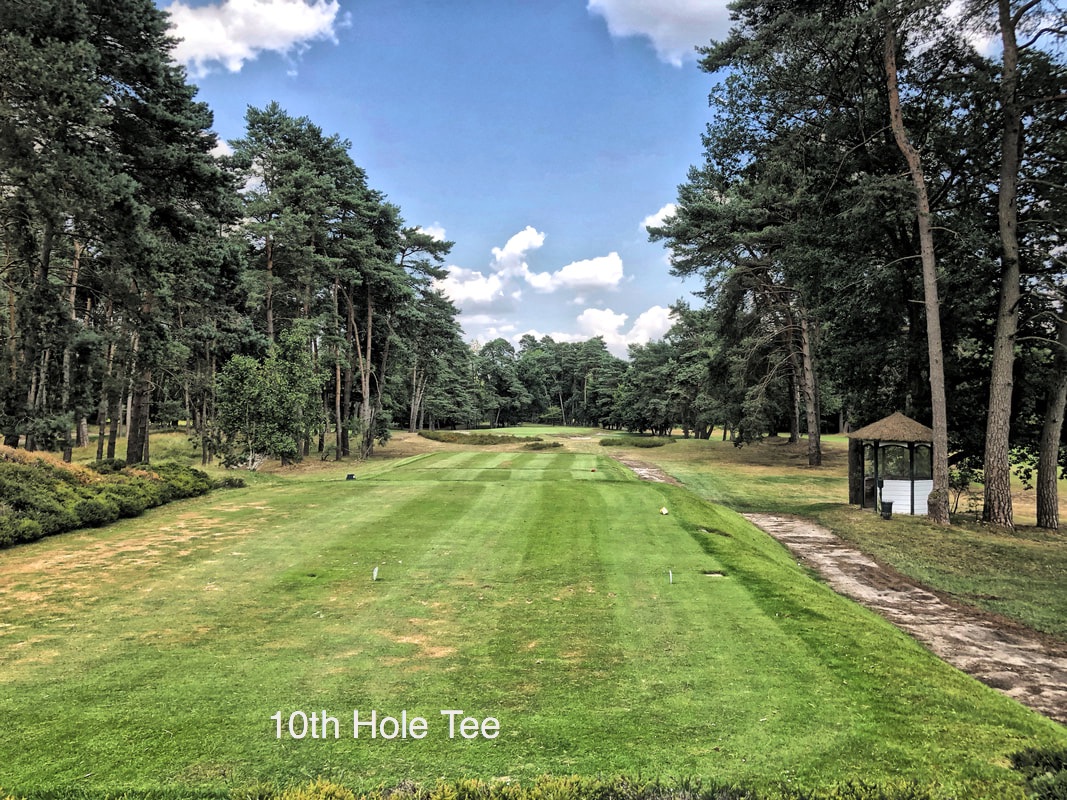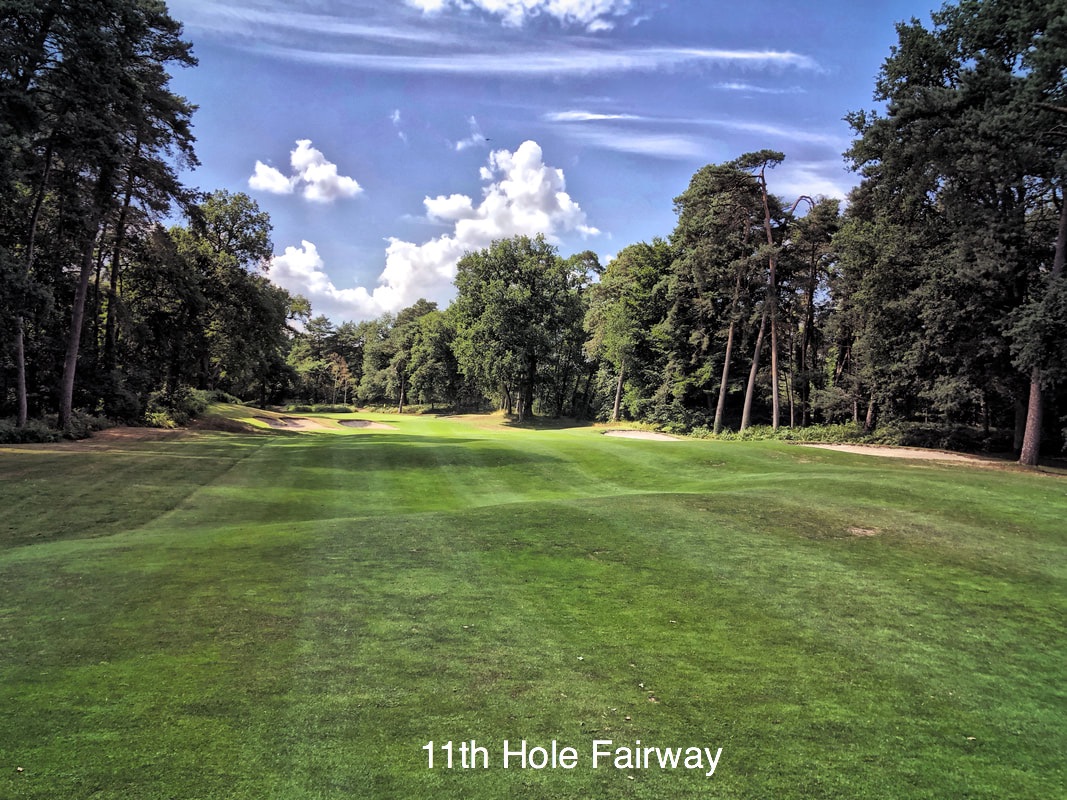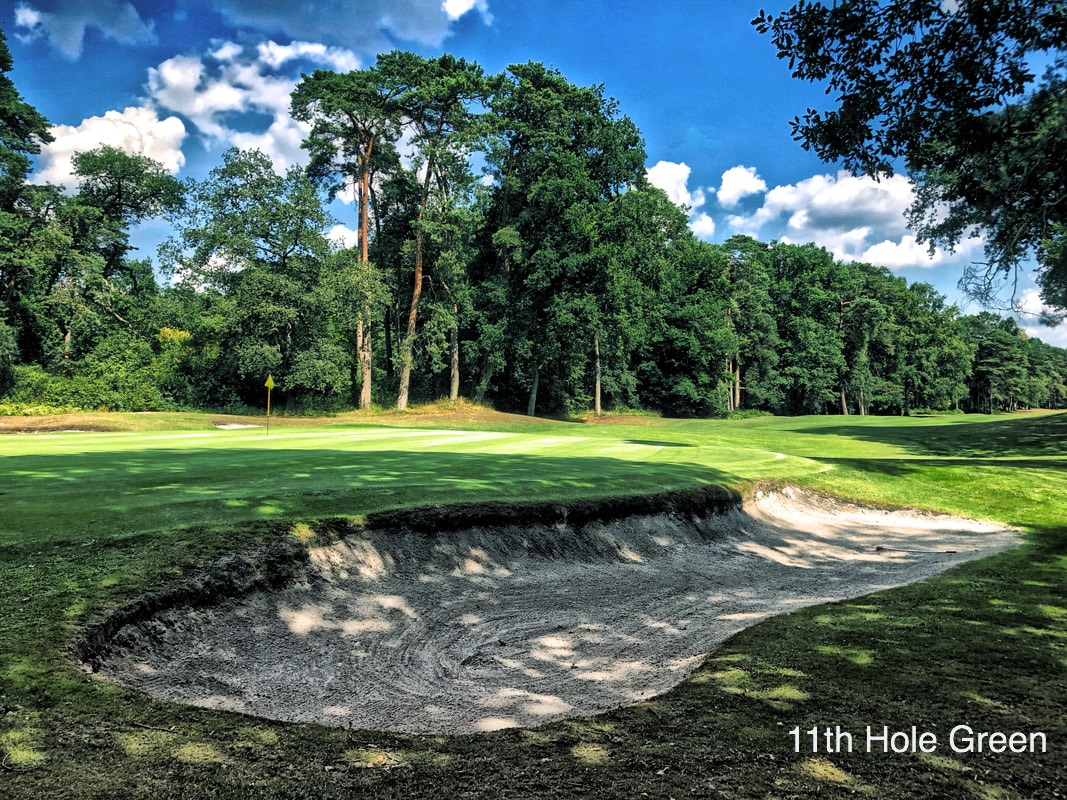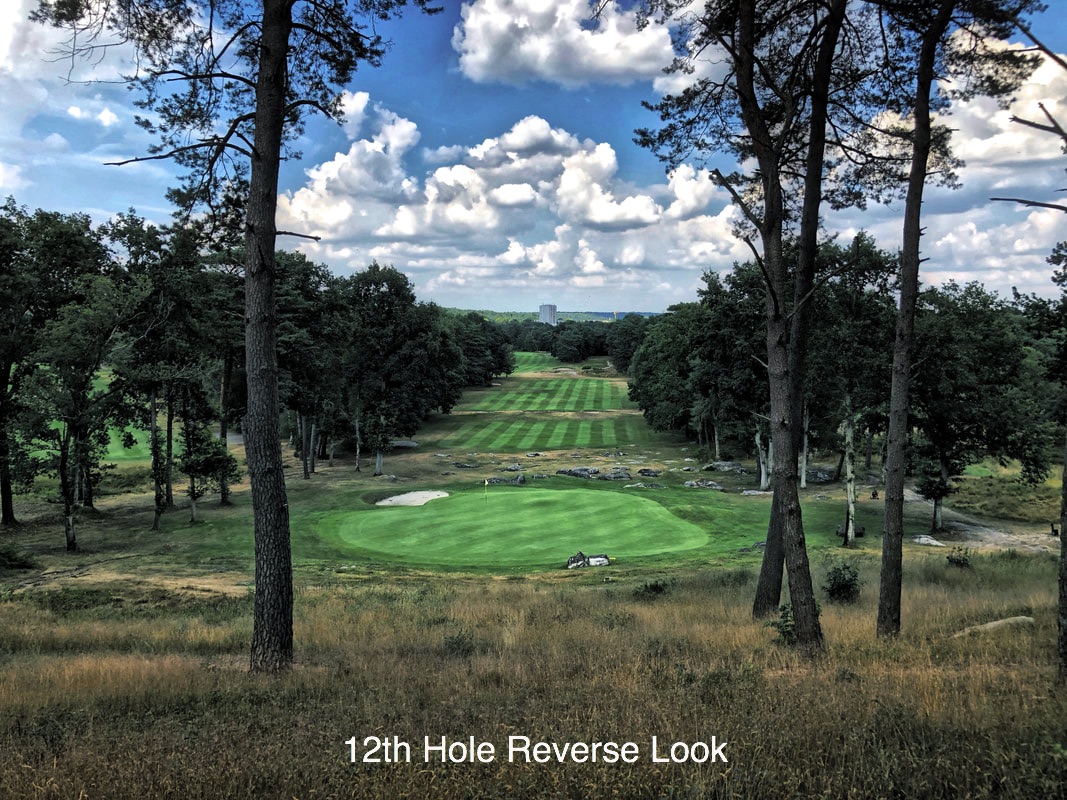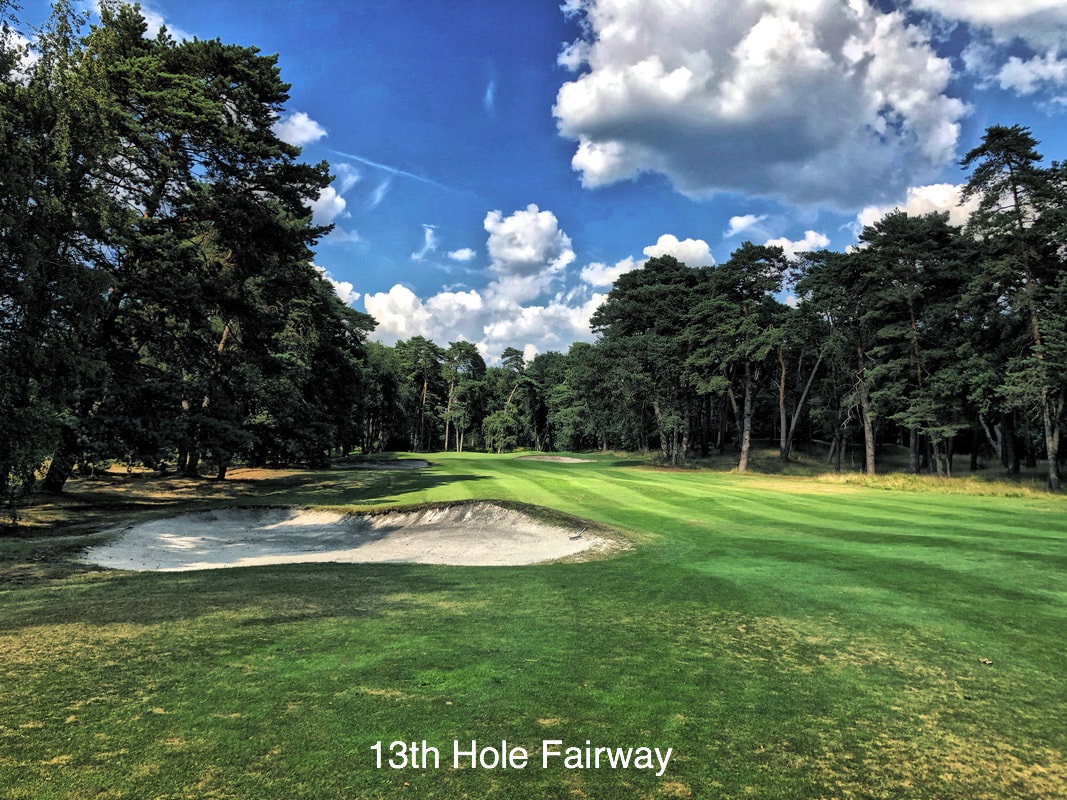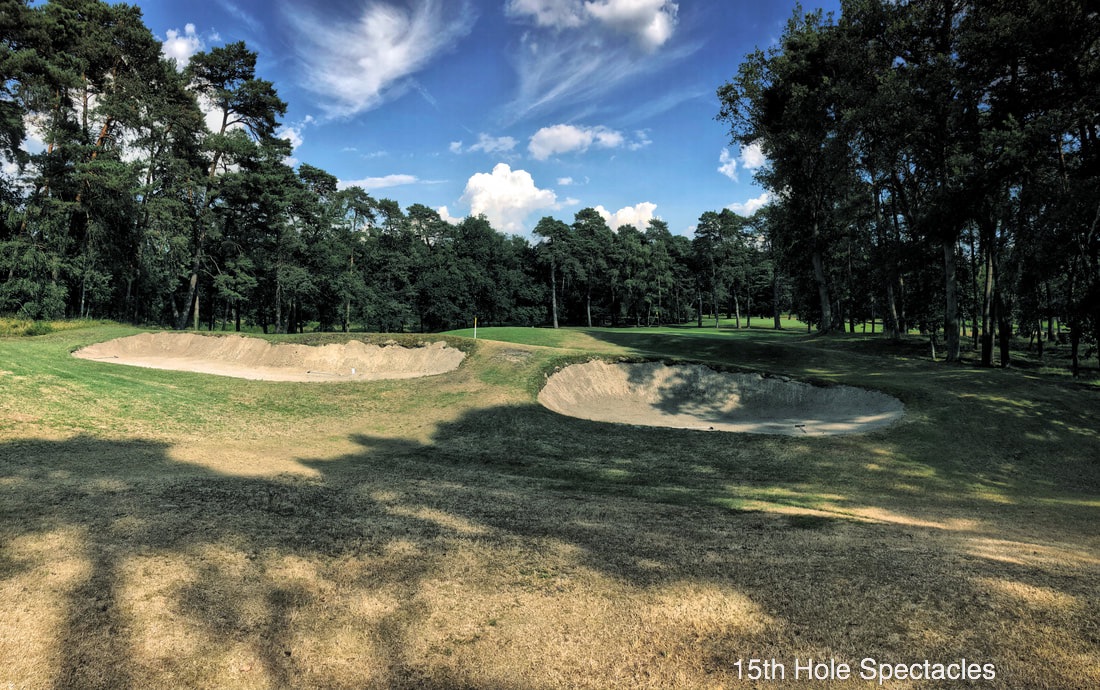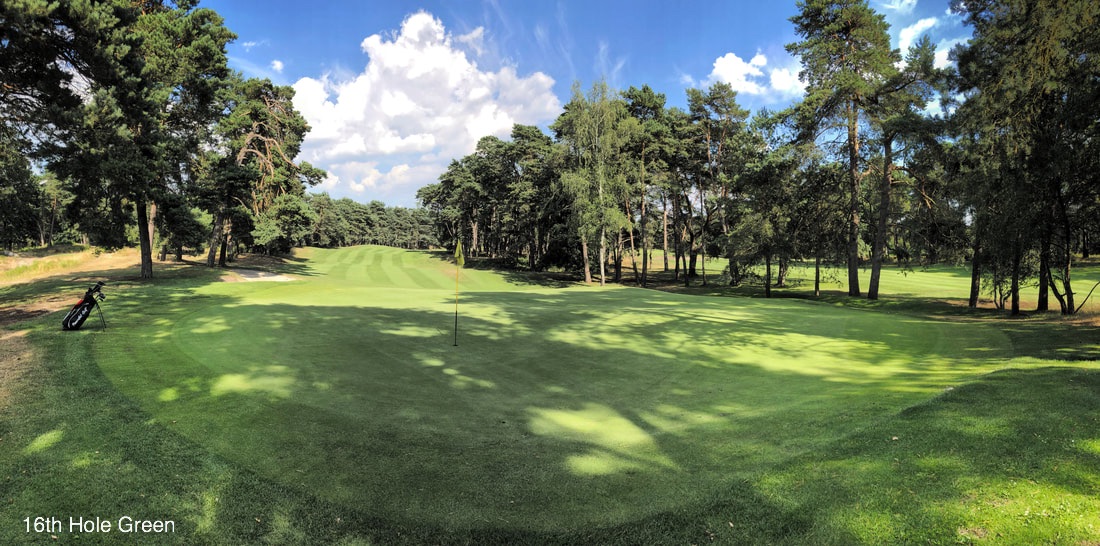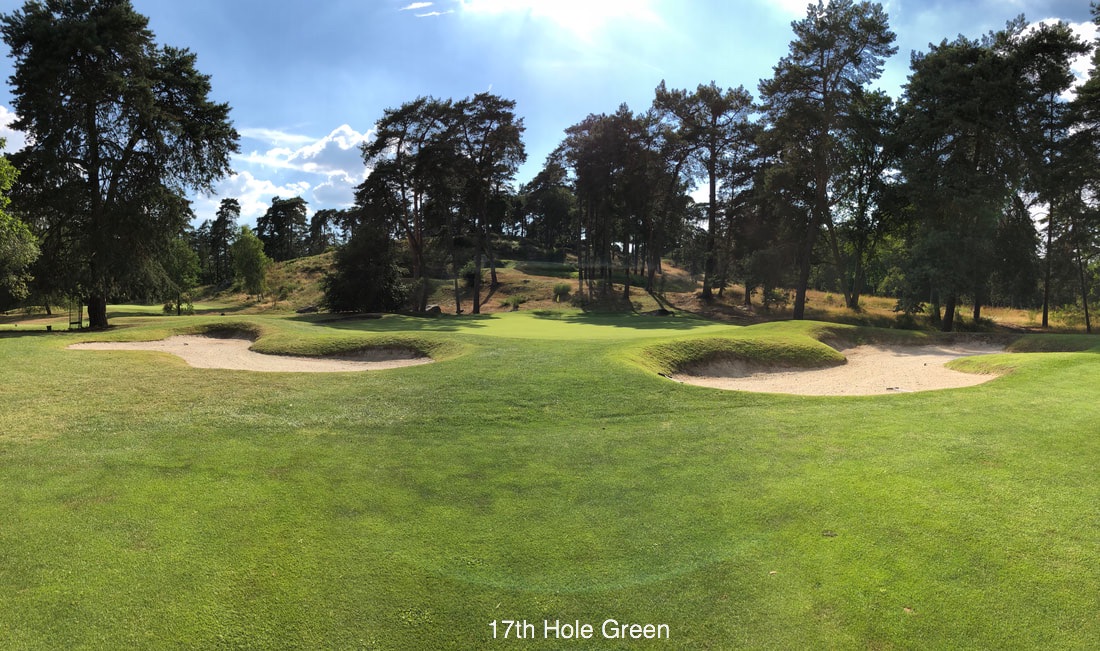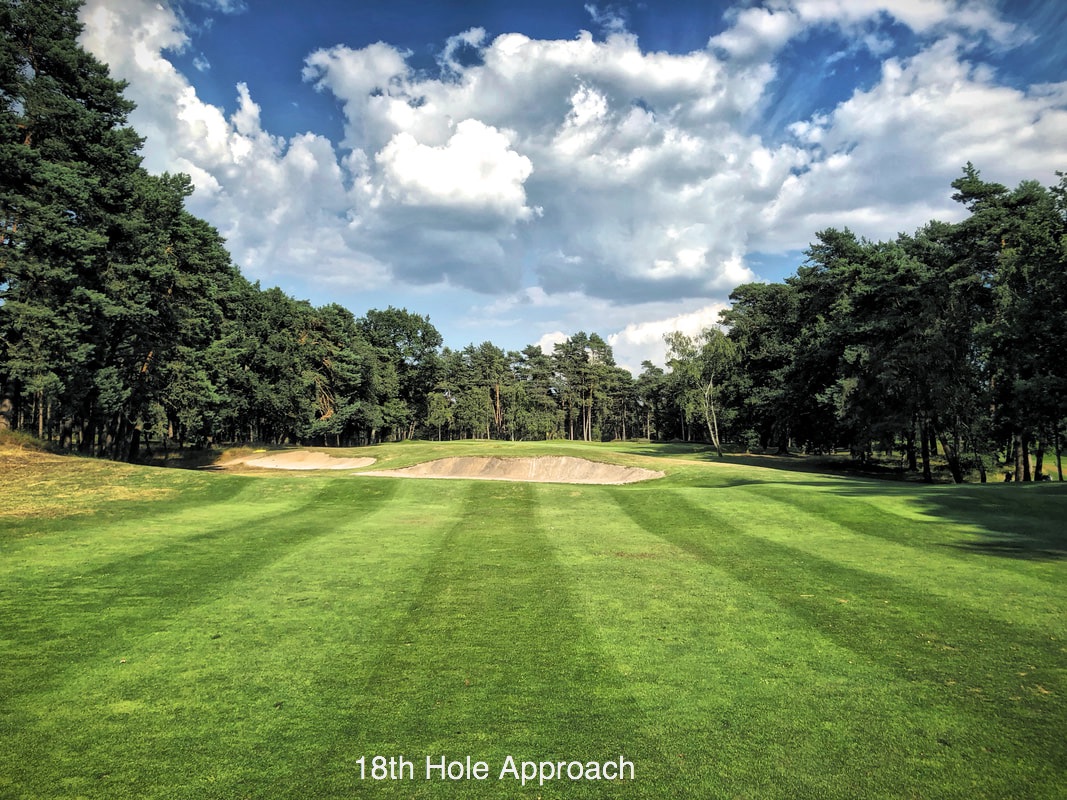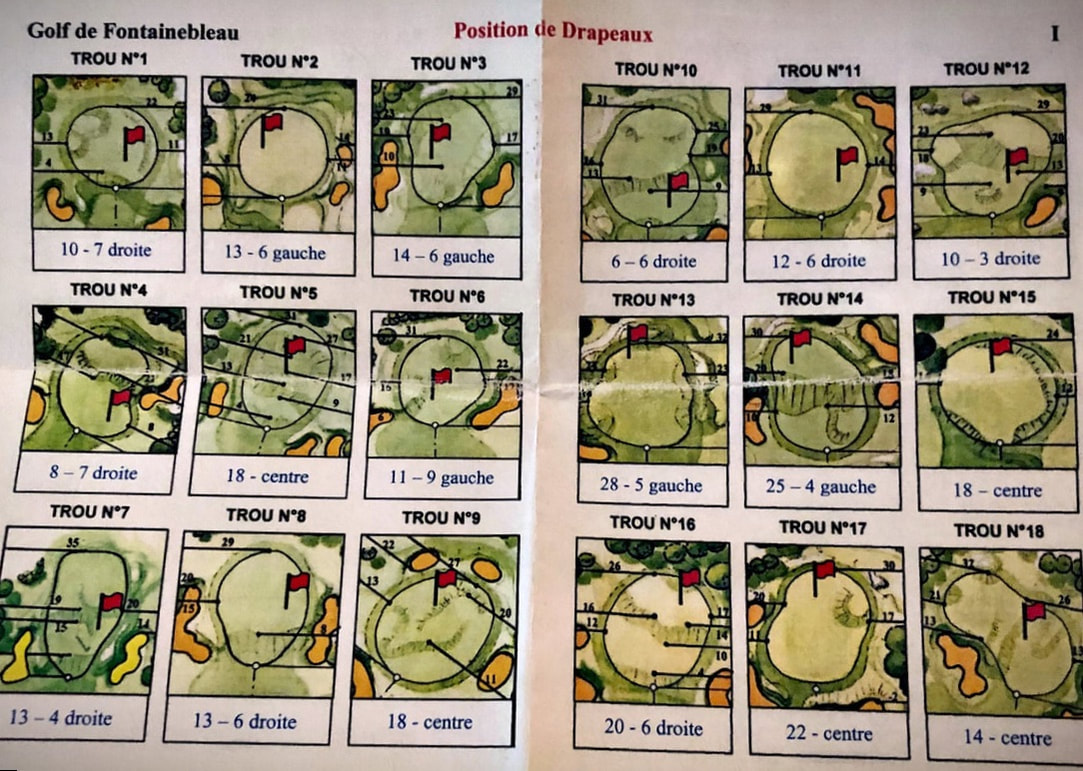 While researching courses to play in France one course kept popping up on all the lists: Golf de Fontainebleau. Located about 35 miles south east of the center of Paris, it has long been considered a top course in all of Europe. Its history dates back to 1909, making it one of the oldest in France as well as one of the most beautiful. The course is built upon the royal hunting grounds of past kings. The Chateau de Fontainebleau about a mile away is a sight to see - predating Versailles by 500 years and the Louvre by 50 years.  The main attraction of this area to former French kings was most notably the Forest of Fontainebleau - in effect, a royal game preserve covering over 13,300 acres. And as such...we now have Golf de Fontainebleau. And what a course it is! Getting to the course was going to be a trip in itself - one that I was looking forward to. Driving from Vidauban in the south up to Fontainebleau in the north had us passing through some of the most beautiful countryside in the world. Filled with lavender and sunflowers fields, the area of Valensole (in Provence) is a frequent stop for photographers during the summer months. The road north is full of adventure around every turn. The 12th century Senanque Abbey was a great side trip with cliff side villages a-plenty in this area. My favorite was Gordes, also pictured here - not far at all from the abbey. There was a great outdoor jazz band playing in the town center that could be heard for miles away. Onward we went to Vaucluse where we discovered the holy grail of sunflower fields. And what better time and place to take a bike ride! We spent the night about half way to Fontainebleau at a small bed and breakfast in Allan (in northern Provence in the Drome department). I would have to say this was my favorite place we stayed on our entire trip. It was the quintessential French experience in a gorgeous Provencal stone farmhouse: Mas De Rabaste. The dinner was the highlight with each of the guests (5 including myself and my girlfriend) enjoying a homemade meal from the owner, Catherine. How many home cooked meals offer 5 courses?! But that's just normal here in France. The night started off with appetizers carefully presented on the outside wooden table facing the vineyards: homemade asparagus mouse in mini glass jars, gougeres (otherwise known as cheese puffs for us commoners), fresh radishes from the garden, and a selection of white wines and Pastis, the local drink. Then came dinner - wow. All local ingredients and as fresh as it gets. And let's not forget the never ending supply of wine. These French know how to have a good time and not apologize for it! Great food, intoxicating wine (which by the why doesn't give me a hangover the next day like wines here in America - go figure) and stimulating conversation - even if my French is rudimentary at best! Before heading to Fontainebleau the next morning we decided on a quick side trip to Vaux Le Vicomte (about 35 miles southeast of Paris and only a half hour drive from Fontainebleau). Vaux Le Vicomte chateau (built in 1658) was the home of Nicolas Fouquet, the finance minister of Louis XIV. Things went awry when Fouquet decided to throw the party of all parties at the chateau, with all the elite in attendance, in an effort to impress king Louis XIV. The plan backfired when Louis got jealous at just how lavish and extravagant Fouquet's surroundings were. The next day he had Fouquet arrested on false charges of embezzlement and had him imprisoned for life. King Louix XIV then hired the same architects, designers and gardeners from Vaux Le Vicomte to make his own glorious palace and gardens at Versailles.  I was so mesmerized by Vaux Le Vicomte that I lost track of time exploring and we quickly had to head to Fontainebleau in order to make my tee time. In no time at all we were there and checked into our quaint French apartment rental located only a two minute walk from the Fontainebleau palace. The next day I ventured off to the golf course, just a mile or so outside the town center in the forest of Fontainebleau. The first thing you notice is a 15 foot stone wall shielding all views from curious onlookers. Feeling privileged to be playing such an historical course, I drove through the entrance up to the clubhouse. The locker room and clubhouse are understated and give a sense of refined dignity. What you see here is nothing short of charming with a touch of class only the French can produce. After making my introductions with the staff I was invited to take my time and use the locker room, which is in a separate building to the left, and then head to the range for a warm up session. Once I was ready it was off to the first tee.   Expecting caddies at such an historic club I was shocked to find there were none. This course is a walking course with most members opting for a pull cart trolley. This is a big difference from the US where most country club golfers either ride in a cart or take a caddie. I must say, though, walking a course is so much more rewarding- the light exercise gets the endorphins going and before long the focus brought to the game is second to none. Upon arriving at the first tee, just outside the dining room of the clubhouse, I saw three ladies about to tee off. With true French class the ladies extended me an invitation to tee off first which I gladly accepted. I thought about asking to join their group but with my limited French I thought it might take away from the golf experience for all of us. Instead I striped a drive right down the middle and after a few smiles from the ladies, I was off. 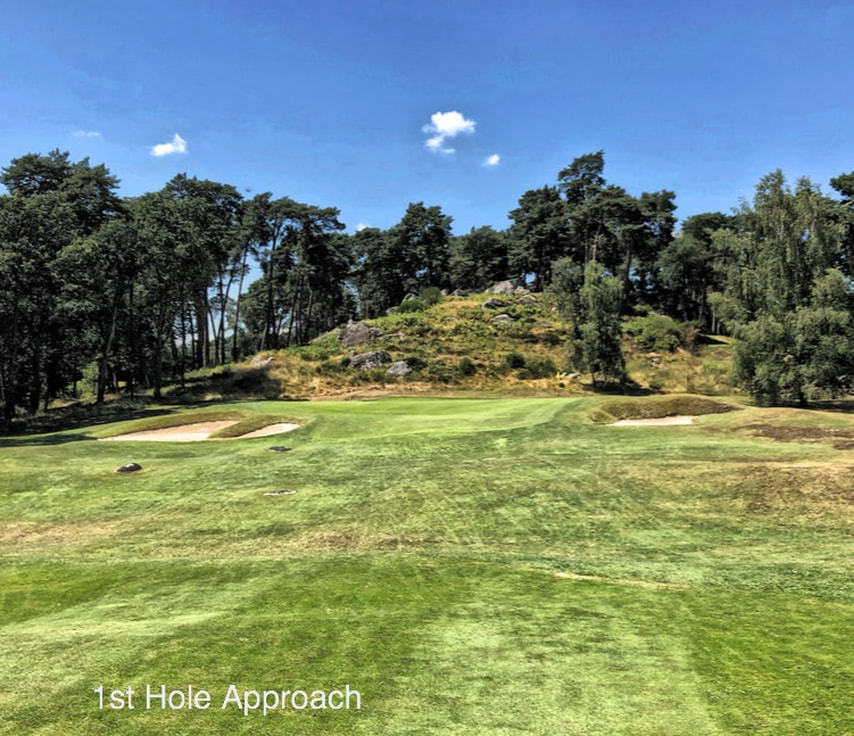 The fist hole is a roller coaster of a fairway with a diabolical green just waiting to reject your approach shot. Luckily after my ball spun off the false front I was able to drain a 40 footer from the fringe to card a sweet 3. The front 9 wraps around the outer edges of the property with the imposing high stone wall always just a bad swing away. The course was originally designed by Julien Chantepie but it wasn’t until 1920, when Tom Simpson redesigned the course, that it became the masterpiece it is today. Visitors sometimes find the course too tree lined and think a tree thinning is in order but I disagree. Fred Hawtree is the current Advisory Architect and I feel he has found a perfect balance between the forest and the course. One of the many design features on the course are the bunkers that angle into the fairway, creating some tough decisions on lines off the tee and interesting angles into the greens. Let’s not forget that this course is through a sandy soil forest so the course usually always plays fast and firm. Fontainebleau is the second largest national forest in France. These trees weren’t planted by members - these trees are in some cases up to 500 years old. The course was routed with the trees in mind and are an intricate part of the design. You can't help but notice the markers on certain trees indicating their age - some have dates on them from the 1600s! Playing the course is truly a walk through time. The course design is a study in deception and camouflage. Many of the fairways from the tee seem extremely tight and seemingly offer no landing areas but once in the fairway you can truly see Simpson's genius. He loved making you see one thing while having other hidden surprises waiting for you. Many of the holes hide sand traps from view until you find yourself in them. Another one of his clever designs was putting traps about 70 yards short of the green but making it appear as though the traps were on the edge of the green. One of Simpson’s favorite lines about design was, “It is only the mad masterpieces that remain in the memory.” The entire round I was constantly redoing my assessment of each hole because of all the hidden and not so hidden features I continued to find. Here on the par 3 7th I came upon the grounds crew working on the bunkers. They were testing out their new flame thrower! This small machine was used to burn off any grass that was trying to grow through the sand edges. I hadn't seen this device before and was impressed with the attention to detail the club was taking with the course. This presentation of the course that seamlessly blends into the surrounding nature is pivotal to Fontainebleau's image. The grounds crew here have done an exceptional job. I found the fairways consistent and the rough manageable with flawless greens running at a brisk 10 on the stimp meter. The front 9 has a few terrific holes but the back nine is one hole after another of exceptional golf. Two standouts have to be the par 3 14th and the par 4 16th. The 12th hole is one of the signature holes. It's a short par 5 at only 465meters but has some interesting obstacles to navigate. One way the hole defends its shortness is by a trio of bunkers across the entire fairway right where you would drive it. Picking the right club here is paramount and you can see why. Your second shot will be from 150- 200meters away across a graveyard of stones putruding from the ground. The stones go right up to the green so choose your club carefully or you could be watching your ball careen into the trees. After playing the 12th its a short hike up to the 13th tee. While taking pictures I spotted this hidden tee above the green and decide I would hit a chip shot down to the 12th green. The only problem was I didn't have a wedge just a driver, the video below is my driver chip and result, not to shabby if I say so myself! The forced carries are definitely intimidating but the scenery is nothing short of spectacular. I mean just look at this tee shot! The par 3 14th I consider one of the best inland par 3 I have ever played and that’s saying a lot. Once again at first glance it seems quite benign but the truth is anything but. As Simpson poignantly said, "The vital thing about a hole is that it should either be more difficult than it looks or look more difficult than it is." And this hole exemplifies that statement to perfection. At only 150 meters it doesn’t strike fear in the golfer. Off the tee, only the three bunkers fronting the green seem to be a real problem. On the particular day that I played the course, the pin was in the back left position which lead me to take an extra club and swing away. I saw my ball come to a quick stop near the pin, which confused me a little because from the tee the green seemed relatively flat. Why didn’t the ball skip forward?  VIDEO TAKES A FEW MINUTES TO DOWNLOAD. ITS WORTH IT! Once I walked up to the green everything became clear. The three bunkers guarding the front are actually there to hide the fact that the green is more of a back to front punch bowl. They also hide additional bunkers to the left and right of the green waiting to swallow any wayward tee shots. The bunkers lie about 6 feet higher than the green which gives the tee shot a look of a flat green when in fact the bowl is quite severe. My ball that stopped dead by the pin was only one double cut away from rolling all the way to the bottom of the bowl. The fact Simpson was able to present this hole in such a way was eye opening to me. The ingenuity and time spent designing this seemingly basic hole was apparent as the drop from the tee to the green was critical to deceiving the golfer. The shaping of the bowl and the angle at which the traps are set all had to be looked at time and time again. This hole is what separates Simpson from his peers and puts him in a class only left for the true greats. He might just be one of the most underrated designer in the history of the game but that’s a debate for another time. The 15th is a dogleg into a blind approach. The hole is controversial because of the blind green but I found it fits with the course just fine. What looked like a really narrow fairway from the tee is actually hiding a pretty wide fairway. The green is probably level with the fairway but this large natural feature is between you and the hole. On the top of the hill Simpson thew in two spectacle bunkers which really gives the hole a kick, we wouldn't want anyone trying to run one over the hill now would we? Looking at picture of the green you can see this would be quite easy if not for the bunkers.  The 16th is a par 4 that fits itself into the landscape perfectly. It starts with a tee shot that looks benign as many do at Fontainebleau. The difference with this hole however is the terrain - it flows like water in a brook. Your drive requires a draw off the tee as the hole doglegs left at about 250 meters. At the corner the fairway drops down some twenty feet with three rumples leading to the flat.  I myself came to rest on one of the rumples, leaving me with a strange side hill downhill lie. The second shot is incredibly challenging with a green that wouldn’t look out of place at Augusta National. In fact the entire hole would fit perfectly there. The green has three tiers with slopes all leading away from the center. My approach had a small draw and hit the center back of the green. As I watched my ball spin off the green to the left I couldn’t believe my eyes. The green looked so flat and easy to attack. Once I reached my ball I was amazed at the subtle breaks and slopes all around and how the sand traps were all placed not to scare the fairway shot but to penalize the ball that hit the wrong spot on the green. Greens that repel balls into traps because the wrong side spin was hit into the green have always made me smile. The fact that the architect would focus on this seemingly small detail never goes unappreciated, even when I end up in the trap. These are the details that teach you about your game and where you need to improve. The short 17th is another great example of Simpson’s magnificent mind at work. Here he tempts you with going for the green in 1. It’s just under 280 meters to the green but in deceptive fashion he presents a hole that looks easy when in reality it becomes so narrow and filled with peril all around the green that only the novice would risk going for it. I had already seen enough on this day to realize I was being deceived even if I was under par. I laid back with a hybrid to about 60 meters and stuck it to 10 feet for birdie. Looking back and down at the 17th green. You can really see how much trouble there is around the green. This is where the layup off the tee is the easy choice unless your score is out the window and it's time to be a hero! After finishing the 18th you are left with a feeling of fulfillment and the need to reflect on the day's challenges. And what better way to do this than in the clubhouse with a glass of French red wine! I searched high and low for my scorecard to add to the post but to no avail. I took this as a sign that Fontainebleau was about much more than a score. Ancient forests and hunting grounds, kings of the past, superior golf design, timeless beauty...this place has it all. I shot 71 from the tips, lol! Just as Fontainebleau Forest has stood the test of time, so will Golf De Fontainebleau.
0 Comments
|
I started this blog after years of traveling and growing frustrated with the limited amount of information about the courses I wanted to play. I wanted to see all 18 holes in pictures before I played the course and to learn a little about the area surrounding the course. I wanted a complete immersive look into where I was going to play. Since no one else was doing this I decided to do it myself. The courses I choose for this blog are the ones that stood out among all the thousands of courses I have played. Not all will be considered architectural masterpieces but they all offer something unique to the golfing world. I hope this blog inspires you to get out and see the world and maybe sneak in a round or two along the way! 
Categories
All
|
Proudly powered by Weebly







